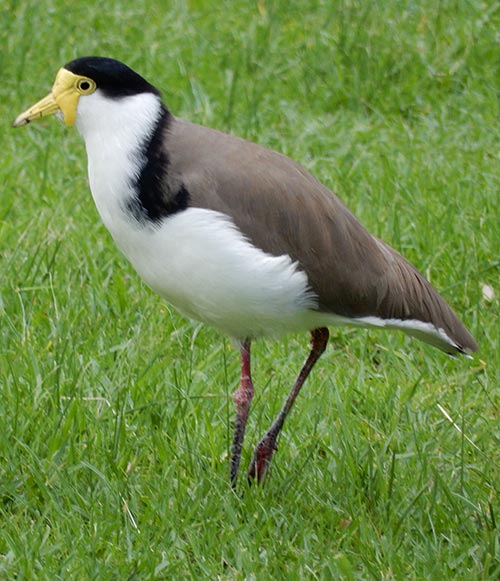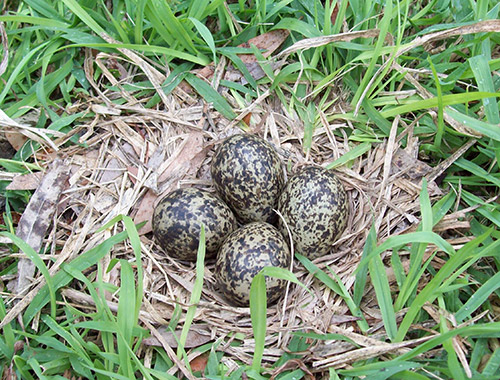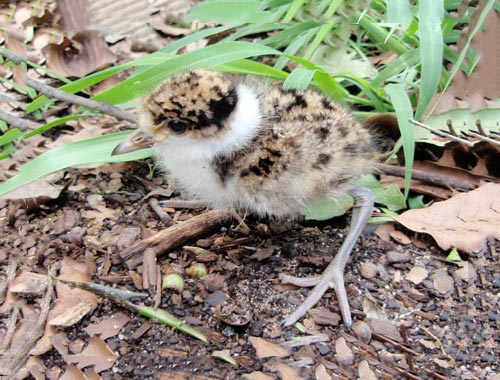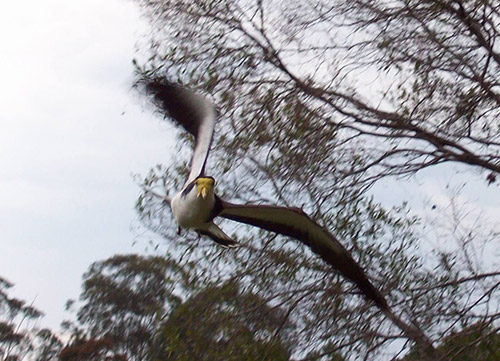Birds
Plover Removal & Management
Masked Lapwing or Plover
Vanellus miles
Other common names: Plover, Masked Plover, Spur-winged plover.
Physical description
- Large, long-legged distinctive bird reaching an average size of 35-38 cm in length.
- BLack head with creamy-white beak and characteristic fleshy yellow wattles masking the face and drooping down. Neck and underparts white with sandy brown back with long red legs.
- The wings have visible bony spurs at close range out from the shoulder.
- Sexes are alike with juveniles duller in colouration and mottled on top of the wings.
- Feeds on a variety of invertebrates from worms, millipedes and grasshoppers, as well as plant matter including seeds and leaves.
Ecology
- Occur throughout most of continental Australia except for the central and westerly parts of Western Australia and South Australia.
- Utilise a wide variety of natural and human-made open environments often situated close to wetlands. Commonly observed in farmlands, grasslands, estuaries and suburban open areas such as gold courses, playing fields and lawns.
- Feeds on a variety of invertebrates from worms, millipedes and grasshoppers, as well as plant matter including seeds and leaves.
Breeding
- Breeding occurs from June to November or December, but if the conditions are suitable, they may breed in any month.
- Nest is constructed in a hollow scraped in the ground in an open area, allowing for the bird to view its surroundings. The hollow is lined with small pieces of dry vegetation from the immediate vicinity.
- The clutch size is usually 3 or 4 eggs, which are a yellowish-olive to light brownish-olive in colour and pear shaped.
- Both sexes take turn to incubate the eggs for 28-30 days. Chicks are born with downy feathers and are capable of feeding themselves a few hours after hatching. They become independent after 8-10 months and can breed in their first year.


Living with Suburban Masked Lapwings
The key to thing to remember when dealing with plovers is they rarely if ever make contact. That distinctive call nearing closer is intended to be intimidating and the bird relies on this as an effective deterrent. The engaging of physical contact by the bird is risky to the bird and seems to be avoided. The often told myth of a plover attacking with its spur holds little weight considering the position of the spur being high on the upper shoulder. Any attempt to use it in flight at speed would most surely result in physical injury to the bird.

Swooping Masked Lapwing
So what can you do to try and deter a swooping Masked Lapwing in your yard before plover removal?
- Masked Lapwings are protected under state legislation and any interference with the bird its nest or eggs is not permitted by non permitted persons.
- If possible, try to avoid the area in which the birds are swooping. If it is in a certain section of your yard, avoid that area as much as possible.
- if possible try to keep lawn length to a reasonable height to prevent birds foraging and nesting. This may in turn encourage the birds to go elsewhere.
- avoid harassing the bird as this may only make it defensive and more likely to continue its defensive behaviour.
- Wear a hat or carry an umbrella when swooping behaviour is occurring. Unlike butcherbirds or magpies a plover isn’t likely to make contact under an umbrella.
Plover removal
If your best efforts of deterring the bird fail then plover removal or mitigation may be your last resort. Ecologically-minded and sound advice are employed by licensed professionals for effective plover removal and mitigation.
Dealing with Masked Lapwings by professional plover removal and mitigation specialists is done in accordance with requirements stipulated by the Department of Environment and Science and permits are issued after stringent examination as to knowledge and suitability to actively manage conflict Plovers. Plover removal and mitigation should only be conducted by a permitted and qualified specialist. Please note that removal of the adult birds is not conducted and plover removal and mitigation techniques are often centred around nest management techniques.
Every effort is made to ensure the birds are managed as to their welfare and to minimise any possible harm.
Plover removal contacts for Brisbane, Gold Coast and surrounding areas can be reached for the following areas:
Brisbane West including The Gap, Bardon, Chapel Hill, Kenmore, Brookfield, Sinnamon Park Oxley, Algester, Forestdale and surrounding suburbs
0413 028 081
Ipswich and surrounding suburbs
0413 028 081
Brisbane North, including Moreton Bay Regional council areas south of Caboolture
0413 028 081
Brisbane South including Moorooka, Yeronga, Woolloongabba, Wynnum, Cleveland, Carindale, Holland Park, Marsden
0421 455 077
Gold Coast all suburbs
0418 738 228
